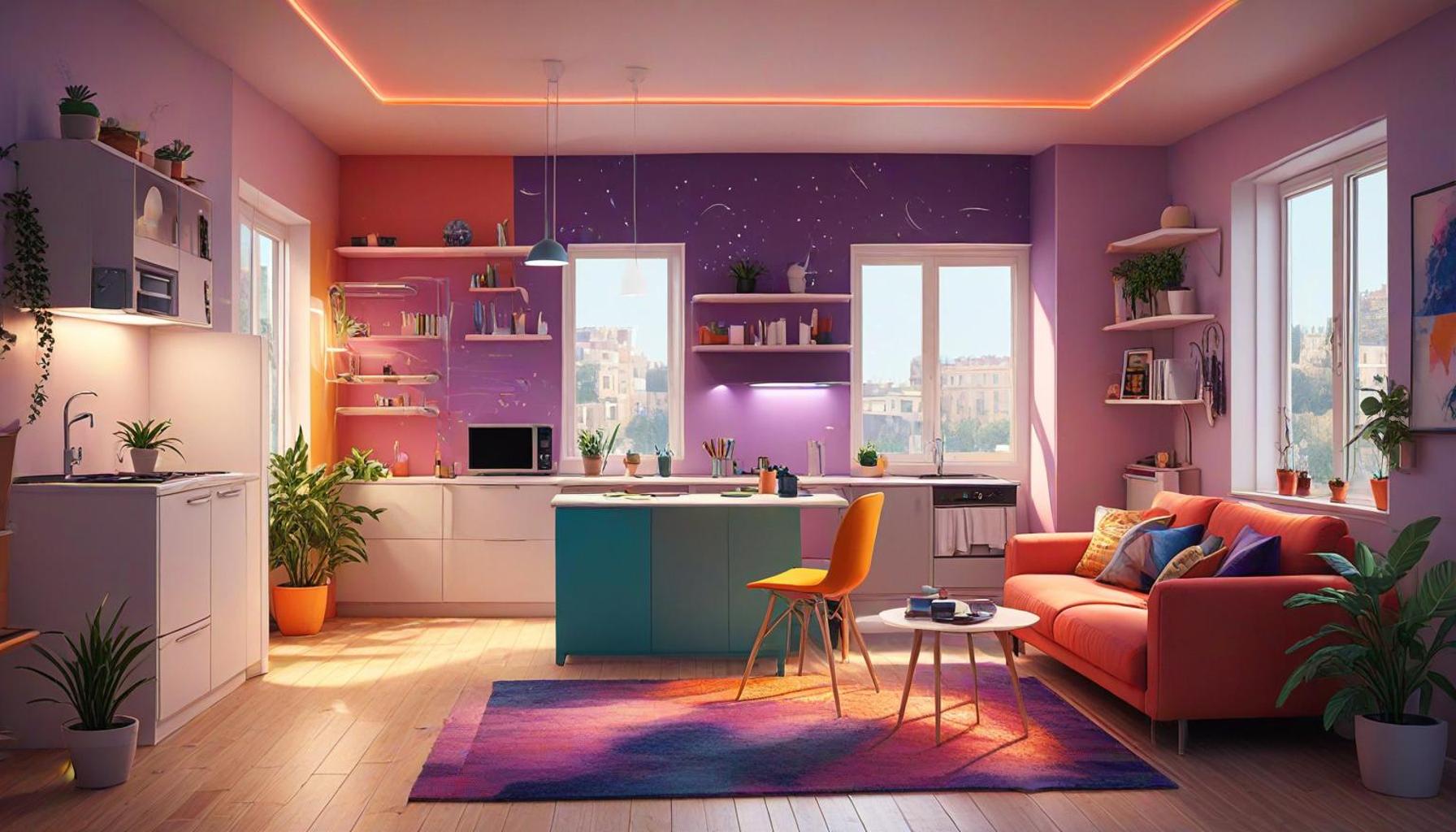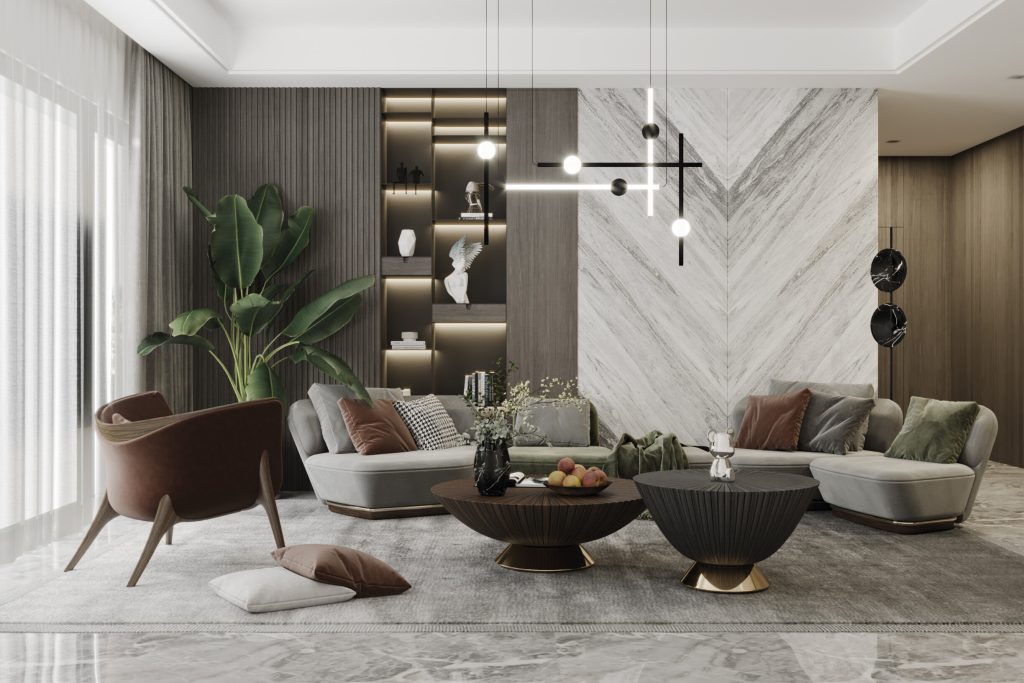Transform Small Apartments Space Optimization for Minimalist Living

In today’s fast-paced world, where urbanization is on the rise, the need for efficient living spaces has never been more critical. Small apartments pose unique challenges, but they also present incredible opportunities for creativity and innovation. By embracing space optimization, residents can transform their compact environments into functional and aesthetically pleasing homes.
Minimalism advocates for a lifestyle that prioritizes quality over quantity, encouraging individuals to live with less while maximizing their living experience. Understanding the principles of personal organization can help anyone looking to enhance their small living space with a minimalist touch. This guide will uncover how thoughtful design choices and strategic storage solutions can lead to a harmonious and practical home.
Get ready to explore:
- Why space optimization matters in minimalist living
- Key strategies for maximizing small apartments
- The role of multifunctional furniture
- Tips for decluttering to achieve a minimalist aesthetic
- Inspiring examples of successful small apartment transformations
Whether you are a seasoned minimalist or simply seeking inspiration for a more organized living space, this article is your gateway to discovering the top steps to create a serene and functional home in less square footage.
DISCOVER MORE: Click here to transform your space
Top 5 Ways Space Optimization Transforms Small Apartments into Functional Minimalist Homes
Living in a small apartment can pose significant challenges, particularly when it comes to making the most of limited square footage. However, with creativity and a strategic approach to space optimization, it’s possible to transform these compact environments into efficient and stylish minimalist homes. Minimalism at its core advocates for a simplified lifestyle, focusing on essentials and eliminating clutter. By applying these principles to apartment living, one can not only enhance the functionality of a space but also cultivate a tranquil and inviting atmosphere.

5. Multi-Functional Furniture
At the heart of any well-optimized space lies the strategic use of multi-functional furniture. These versatile pieces are designed to serve multiple purposes, allowing you to reduce the amount of furniture required and, consequently, the amount of space they consume. Investing in such furniture can drastically change the usability of small apartments.
For instance, a sofa bed offers a comfortable seating solution by day and converts into a bed by night, ideal for those who entertain guests overnight or have limited sleeping arrangements. Similarly, ottomans with storage are not merely footrests but also serve as secret hideaways for blankets, magazines, or even board games, keeping them within reach yet out of view.
Consider the utility of a wall-mounted desk that can be folded away when not in use. This is perfect for creating a home office in a compact space, adding functionality without permanent obstruction. When choosing multi-functional furniture, opt for pieces that align aesthetically with your minimalist interior to maintain a cohesive look.
4. Embracing Vertical Space
In the quest for space optimization, many overlook the potential above their heads. Utilizing vertical space effectively can add dimension and storage room to any small apartment, enhancing both its functionality and style.
Vertical storage solutions can be incredibly diverse. From tall shelving units and wall hooks to ceiling-mounted racks, these options free up valuable floor space and make rooms look taller and more spacious. Installing shelves above doorways not only provides additional storage for books or decor but also draws the eyes upward, making ceilings appear higher and spaces airier.
Wall-mounted bike racks can also serve a practical purpose. By storing bicycles vertically, you reclaim floor space that would otherwise be occupied by clunky standing racks. Additionally, employing tall cabinets gives you a similar advantage, offering ample storage without consuming the same footprint as traditional lower storage solutions.
3. Decluttering Regularly
Achieving a minimalist lifestyle in a small apartment is heavily reliant on the practice of decluttering. Regularly removing excess possessions ensures that your home remains both functional and visually appealing, embodying the minimalist tenet of ‘less is more.’
Implementing a ‘one in, one out’ policy can help manage your belongings. For every new item that enters your home, consider donating or discarding one that no longer serves a purpose. This approach prevents the build-up of unnecessary clutter over time.
Schedule periodic evaluations of your belongings, perhaps seasonally, to reassess their utility and sentimentality. Let go of items that no longer fit your lifestyle or aesthetic. Furthermore, practice mindful purchasing. By only buying what you need or truly desire, you reduce the likelihood of clutter reappearing in your space. These deliberate strategies will help maintain a home that is orderly yet inviting.
2. Open Floor Plans
Embracing an open floor plan is a smart way to create a sense of spaciousness and freedom within a confined living area. Traditional partitioned layouts can segment a small apartment into even smaller nooks, impeding flow and functionality.
Consider removing non-essential walls or partitions—with professional guidance—to open up your space. By doing so, you create visual continuity between living, dining, and kitchenette areas, thus making the apartment feel more expansive and cohesive.
A clever trick for delineating areas within an open floor plan without adding walls is the use of area rugs. These can define distinct zones within the same room, such as a lounge or dining area, subtly organizing the space while preserving openness.
Choosing low-profile furniture that doesn’t block sight lines can further enhance the open aesthetic. Furniture with slim lines and lighter materials keep the atmosphere airy and prevent visual weight from bogging down the room.
1. Smart Organization Systems
The cornerstone of a minimalist home is a robust smart organization system. A well-organized space is not just pleasing to the eye but also elevates efficiency and reduces the mental clutter often caused by chaotic environments.
Investing in drawer dividers can keep kitchen utensils, office supplies, and personal items orderly and segregated. This not only maximizes drawer space but also makes items easier to find, saving time and reducing frustration.
Using a labeling system for storage boxes or containers can transform how you interact with your belongings. Clearly labeled items are simple to locate, facilitating quicker access and organization, particularly when stored away.
Lastly, creating a custom closet system tailored to your specific clothing and accessory needs can revolutionize a traditionally cluttered area. By incorporating adjustable shelving and varied hanger levels, you accommodate all kinds of apparel efficiently, maximizing every inch of space.
By applying these top strategies, small apartment dwellers can effectively turn their limited spaces into functional, serene minimalist homes. In doing so, they not only improve everyday living but also enhance the home’s appeal and potential value. Ultimately, it’s about making space work better for our lifestyles, one intelligent decision at a time.
| Category | Details |
|---|---|
| Space-Saving Furniture | Utilizing multifunctional furniture such as sofa beds and extendable dining tables can significantly enhance the usability of small living areas. |
| Vertical Storage Solutions | Incorporating shelves and wall-mounted cabinets not only optimizes floor space but also draws the eye upwards, creating the illusion of height in the room. |
| Minimalist Design Principles | Adopting a minimalist aesthetic can help in reducing clutter and creating a serene living space that feels larger and more peaceful. |
| Color Schemes | Using lighter colors on walls and furniture can maximize natural light, making small apartments feel airy and spacious. |
DISCOVER MORE: Click here for practical wardrobe tips
Frequently Asked Questions About Space Optimization in Small Apartments
What are some effective strategies for optimizing space in a small apartment?
Effective space optimization strategies include multifunctional furniture, such as sofa beds or extendable tables, which serve dual purposes and free up room when not in use. Additionally, using vertical space by installing shelves or hanging storage solutions can significantly maximize space without cluttering the floor area. For a minimalist touch, opting for a neutral color palette can create an airy and spacious feel, enhancing the perception of a larger area.
How can I maintain a minimalist aesthetic while optimizing space?
Maintaining a minimalist aesthetic in a small apartment requires a focus on simplicity and functionality. Choose furniture and decor that have a purpose, and keep surfaces clear of unnecessary items. Incorporate storage solutions that conceal clutter, such as cabinets with clean lines or baskets that blend with your décor. Regularly assess your belongings and keep only what is essential, which is key to preserving the minimalist aesthetic.
Are there specific types of furniture that best suit small, minimalist spaces?
Certain furniture types are particularly beneficial for small, minimalist environments. Modular furniture is highly adaptable, allowing you to rearrange or add pieces as needed. Pieces like wall-mounted desks or fold-down tables provide utility without occupying permanent space. Opt for furniture with lean silhouettes and built-in storage to maintain a streamlined look while maximizing functionality.
What role does lighting play in transforming small apartments?
Lighting is crucial in shaping the ambiance and perception of space in a small apartment. To create an illusion of spaciousness, utilize a mix of ambient, task, and accent lighting. Natural light is ideal, so keep windows unobstructed wherever possible. At night, strategically placed mirrors can reflect light and enhance the overall brightness of the space, making it feel larger and more welcoming.
DISCOVER MORE: Click here for essential wardrobe tips
Conclusion
In our increasingly urbanized world, the challenge of living in tight quarters has prompted many to rethink their approach to space and lifestyle. The art of optimizing space in small apartments transcends mere necessity, evolving into a profound practice of minimalist living and personal organization. This concept is not just about making do with less; it’s about enhancing the quality of life with thoughtful design and intentional choices.
Main Takeaways
- Decluttering is the first step towards transforming a small apartment into a serene, functional home. By prioritizing essential items, residents can create a calming and organized environment.
- The strategic use of multi-functional furniture maximizes utility without compromising aesthetics, showing that practicality can indeed coexist with style.
- Vertical space optimization proves that even the most overlooked areas can be converted into valuable storage or artistic displays, enhancing both function and beauty.
- The importance of natural light and mirrors cannot be overstated, as these simple elements work wonders in making a compact space feel open and airy.
- Adopting a minimalist mindset encourages individuals to focus on quality over quantity, fostering a deeper appreciation for meaningful possessions.
By integrating these strategies, one can not only make small apartments livable but also transform them into personal sanctuaries that reflect a modern, minimalist ethos. This approach to living aligns with a broader cultural shift towards sustainability, intentional design, and a more mindful way of life. The practical and aesthetic benefits of optimized small spaces are indisputable, inviting individuals to explore further the endless possibilities of a minimalist lifestyle. In embracing this journey, the transformation of a simple apartment into a harmonious home becomes an empowering reality.
Related posts:
The Importance of Selecting Functional Furniture in Optimizing Minimalist Space
Transforming Outdoor Spaces: Minimalism and the Creation of Compact Leisure Areas
The Synergy between Minimalism and Feng Shui in Space Optimization
How Minimalism Contributes to Space Optimization in Small Environments
Minimalism and the Redefinition of Spaces: Creating Open and Fluid Environments
How Natural Light Can Optimize Spaces in Minimalist Environments

Linda Carter is a writer and organization expert specializing in minimalism and personal organization. With extensive experience helping individuals create clutter-free, functional spaces and adopt mindful habits, Linda shares her knowledge on our platform. Her goal is to empower readers with practical advice and strategies to simplify their lives, stay organized, and achieve a sense of calm and balance in their daily routines.